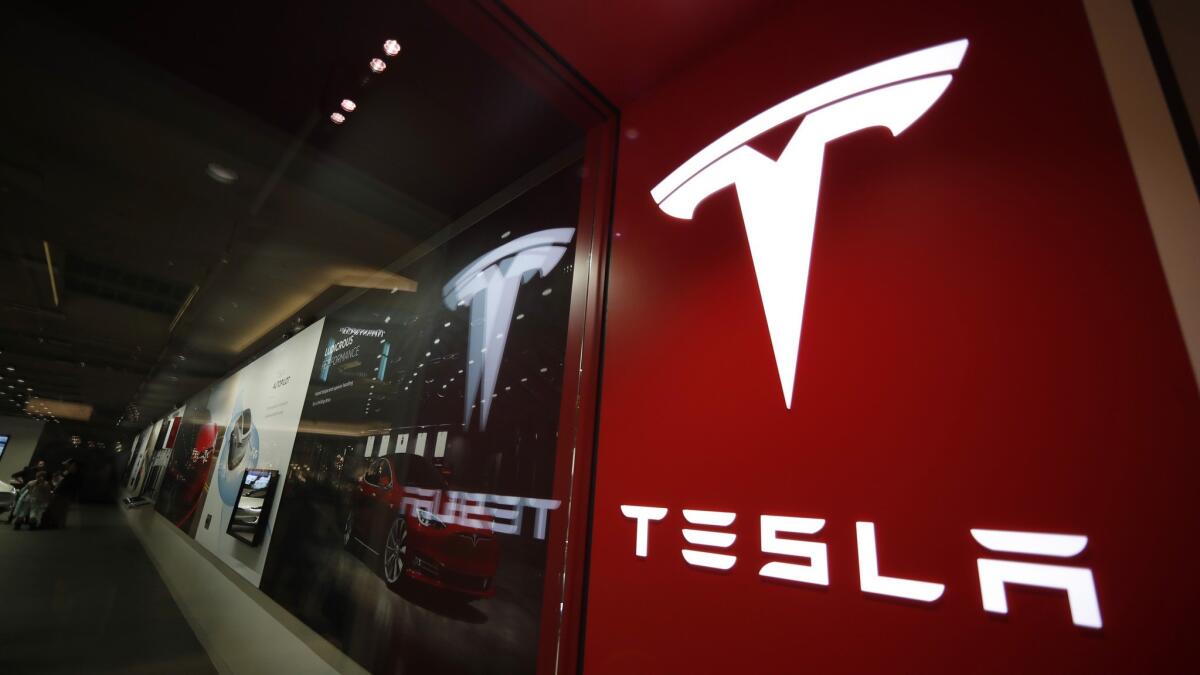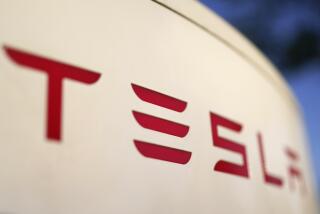The public thinks Tesla’s Autopilot is safer than it is, an insurance group says

For years, automakers have been offering driver-assist technologies on many new cars. The software and sensors can help drivers stay in their lane, maintain a steady speed and, in some cases, change lanes to avoid other vehicles.
But drivers don’t fully understand the technologies’ capabilities and limitations, according to a study released Thursday by a leading insurance industry group.
That disconnect between what tech can do and what people think it can do leads to risky driver behavior that has resulted in crashes, injuries and deaths, and it could provoke a backlash against potentially life-saving driverless cars, said the Insurance Institute for Highway Safety, which is funded by auto insurance companies.
“Driver assistance systems show safety benefits. The last thing we want to see is those benefits eliminated by the automakers introducing other risks into the vehicle,” IIHS President David Harkey said.
Tesla Inc., which is mentioned prominently in the study, disputed the findings.
“This survey is not representative of the perceptions of Tesla owners or people who have experience using Autopilot, and it would be inaccurate to suggest as much,” the electric-car company said in a statement. “If IIHS is opposed to the name ‘Autopilot,’ presumably they are equally opposed to the name ‘Automobile.’ ”
In all current versions of driver-assist technology, drivers are supposed to stay attentive even as robotic systems take over some driving duties. These systems share some characteristics with the completely driverless cars under development, but they are fundamentally different because a human must remain in control.
The IIHS study released Thursday questioned more than 2,000 people about the names used by five automobile companies to market systems intended to relieve driver stress and improve safety, and its results indicated that names such as Tesla’s Autopilot create consumer confusion about how much attention a driver really has to pay. The other technologies covered in the study are Audi and Acura Traffic Jam Assist, Cadillac Super Cruise, BMW Driving Assistant Plus and Nissan ProPilot Assist. (The automakers’ names were not mentioned in the study.)
Autopilot created the most confusion among study respondents. Nearly half — 48% — thought it would be safe to take hands off the steering wheel when using the system. The Tesla manual says the driver should hold the wheel at all times, and — when used as intended — Autopilot warns drivers if they do not. Only 21% to 33% of study respondents thought (incorrectly) that it would be safe for a driver to take hands off the wheel when using the other driver-assist systems.
Twenty percent or more thought it would be safe to talk on the phone while using any of the systems. A smaller percentage thought texting, watching a video or taking a nap would be safe. Sixteen percent said it would be safe to text while using Autopilot; less than 10% thought so for the other driver-assist systems. Six percent said it would be safe to nap while using Autopilot; about 3% thought the same about the other systems.
The assumption that Tesla’s Autopilot was more capable of handling intrinsically unsafe behavior didn’t surprise Harkey.
“The name implies something to the consumer about automation, that the vehicle is designed with automated capabilities that allows them to take on other tasks,” he said.
“We’ve seen a number of unfortunate fatal crashes involving Tesla Autopilot,” Harkey said. “It’s apparent from crashes that have happened that people are improperly using the system and improperly inferring the system does more than it is designed to.”
He mentioned a crash in Delray Beach, Fla., in March in which a Tesla with Autopilot engaged drove underneath a semitrailer, shearing off the top of the car and killing the Tesla driver. A similar fatal crash occurred between a Tesla on Autopilot and a semitrailer in 2016.
Since Autopilot was introduced in 2014, videos have circulated showing drivers abusing the system, including one that made the rounds last week showing a driver apparently snoozing in his Tesla while driving along the 405 Freeway in Los Angeles.
Tesla said it gives drivers clear direction about Autopilot’s capabilities and how it should be used.
“Tesla provides owners with clear guidance on how to properly use Autopilot, as well as in-car instructions before they use the system and while the feature is in use,” the company said. “If a Tesla vehicle detects that a driver is not engaged while Autopilot is in use, the driver is prohibited from using it for that drive.”
Tesla also said “the survey did not expose participants to any of the materials or education that we provide drivers and owners with before they use Autopilot.”
The company said the IIHS study implies that the deaths in the two crashes that involved semi trucks were the result of misunderstanding by the Tesla drivers. Tesla said family statements about the drivers’ familiarity with Autopilot showed that was not the case, at least in the 2016 crash. The crash is still under investigation by federal safety officials.
The insurance group said the study was meant to look at how mass-market consumers, who may or may not be familiar with driver-assist technology, react to brand names.
Kelly Funkhouser, head of connected and automated vehicles at Consumer Reports, said companies must do a better job of communicating the limitations of driver-assist systems.
“As these get better, it’s human nature to check out,” she said. “We get bored. It’s second nature to pick up your phone. The problem is, these systems are still in their infancy. They’re good enough to give you a sense of confidence in them but not enough to maintain accurate control as the car moves through different conditions.”
Funkhouser researched the driver-robot connection in self-driving cars at the University of Utah before she joined Consumer Reports last year. The better the driver-assist system, she said, the more time it took for a human driver to react to problems.
She also studied brand names at Utah and found that people overestimated Autopilot’s capabilities but underestimated the capabilities of Cadillac’s Super Cruise, whose abilities are similar to Autopilot’s but which uses an eye tracker instead of steering-wheel torque measurement to monitor driver attention. (Autopilot won’t notice a driver is sleeping if he or she keeps a hand on the wheel, Funkhouser noted, but the Cadillac with its eye tracker would register a problem and the car would move to the side of the road.)
It’s important for people to see beyond marketing hype, Funkhouser said. “A lot of people with a lot of money are promising things that aren’t real or haven’t even been invented yet.”
Twitter: @russ1mitchell







